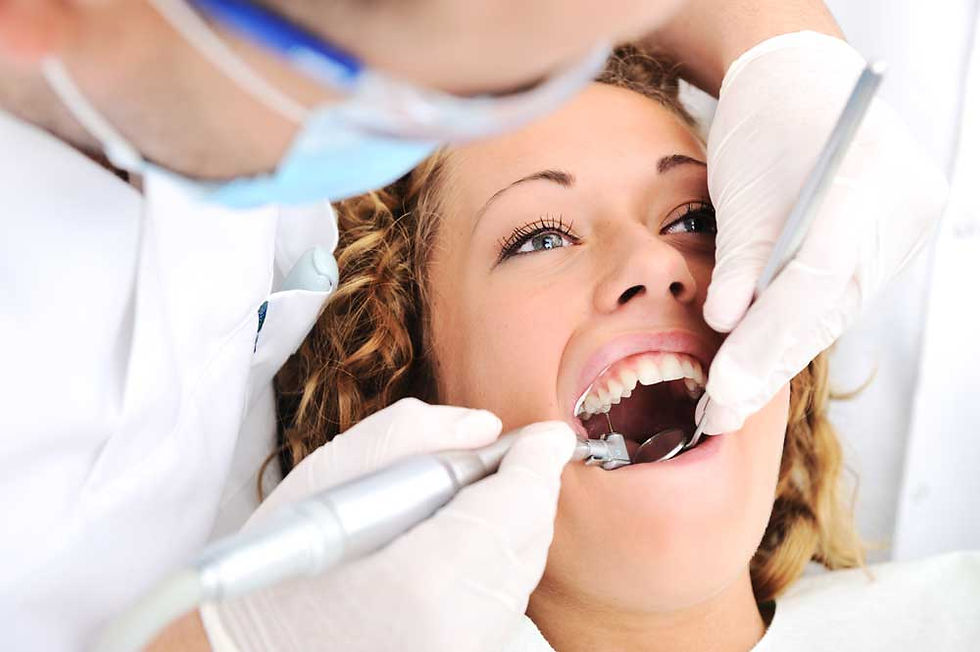Things To Know About Gum Disease
- Laticia Gibson
- Apr 22, 2023
- 3 min read
When talking about your oral health, a straight set of teeth does not show that you have healthy gums. Having a pearly white set of teeth that does not indicate you can't have gum disease or the first stage of gum disease (Gingivitis). Gum disease, in the starting, is not painful, and people often don't come to know about it. But gum disease is reversible. With proper oral care, you can reverse your gum disease. Visit your dentist for regular checkups, and usually, with professional dental cleanings, it can go away.
Therefore, if left untreated, gingivitis can progress to periodontitis disease, and you may need additional treatment to cure it. Generally, early treatment of periodontitis is easy to treat and control. Treating gum disease early can reduce the chance of tooth loss and further damage to the tooth. You must visit your dentist for regular checkups to notice any oral disease.
What is gum disease?
Plaque accumulation along and under the gum line is the first indication of gum disease. Bacteria-filled clingy film-like material on the teeth is called plaque. Gum disease and tooth decay can result from infections that harm the bone and gums. The first stage of gum disease also comes with plaque. Gingivitis causes symptoms that include inflamed, sensitive, red, swollen, and bleeding-prone gums. If you notice any of these signs, you must visit the dentist.
Since the bone and tissue supporting the teeth in place are not damaged, the damage is fixable.
What are the main reasons for gingivitis and periodontitis?
Mainly the signs of gingivitis and periodontitis disease are plaque buildup in and between the teeth and gums. Bacteria deposit on the teeth and gum line and eat the sugars in the mouth and free waste byproducts, causing irritation and inflammation to the gums.
Let's see some other factors that affect gums and lead to gum disease include:
Changes in hormones.
For many women during pregnancy, hormone changes can cause growth in the gum tissue's inflammatory response. Hormone fluctuations may make gum tissue more exposed to plaque-related inflammation.
Medications.
Also, some medication drugs may cause your gums to enlarge and make your gums more prone to bacteria attacking your teeth and gums. Enlarged gums are also not easily cleaned.
Nutrition.
Low vitamin C or increased carbohydrate intake can cause gum disease, inflammation and irritation.
How does gingivitis progress to periodontitis?
Plaque can build up and spread to the gum line if gingivitis is not treated. The poison built by the bacteria in the plaque irritates and inflames the gums, causing more problems with your gums and teeth.
This can also cause the body to have a long-lasting inflammatory reaction, which harms the bone and gum tissue that supports the teeth. And further, it leads to periodontitis disease. Once your gums reach periodontitis, you must visit the dentist and get gingivitis treatment. If it develops more severely and leads to bone or gum tissue loss, you may need surgery to cure the gum disease.
Gum pockets form as the gums deteriorate and peel away from the teeth. Bacteria in the mouth can invade these spaces, leading to further tissue damage. Additionally, the tissue damage may deepen the gum pockets. The teeth may become loose if the gaps widen due to bone loss. Further, deeper pockets can make it more difficult to remove bacteria when brushing and flossing teeth.
In Conclusion:
Gum disease is reversible with good practice of oral hygiene. It's necessary to talk to your dentist if you notice any signs of gum disease because it can be reversed at the early stages. Contact a local dentist near me if you have any symptoms of gum disease.
Article Source : https://www.articleapprove.com/things-to-know-about-gum-disease/


Comments